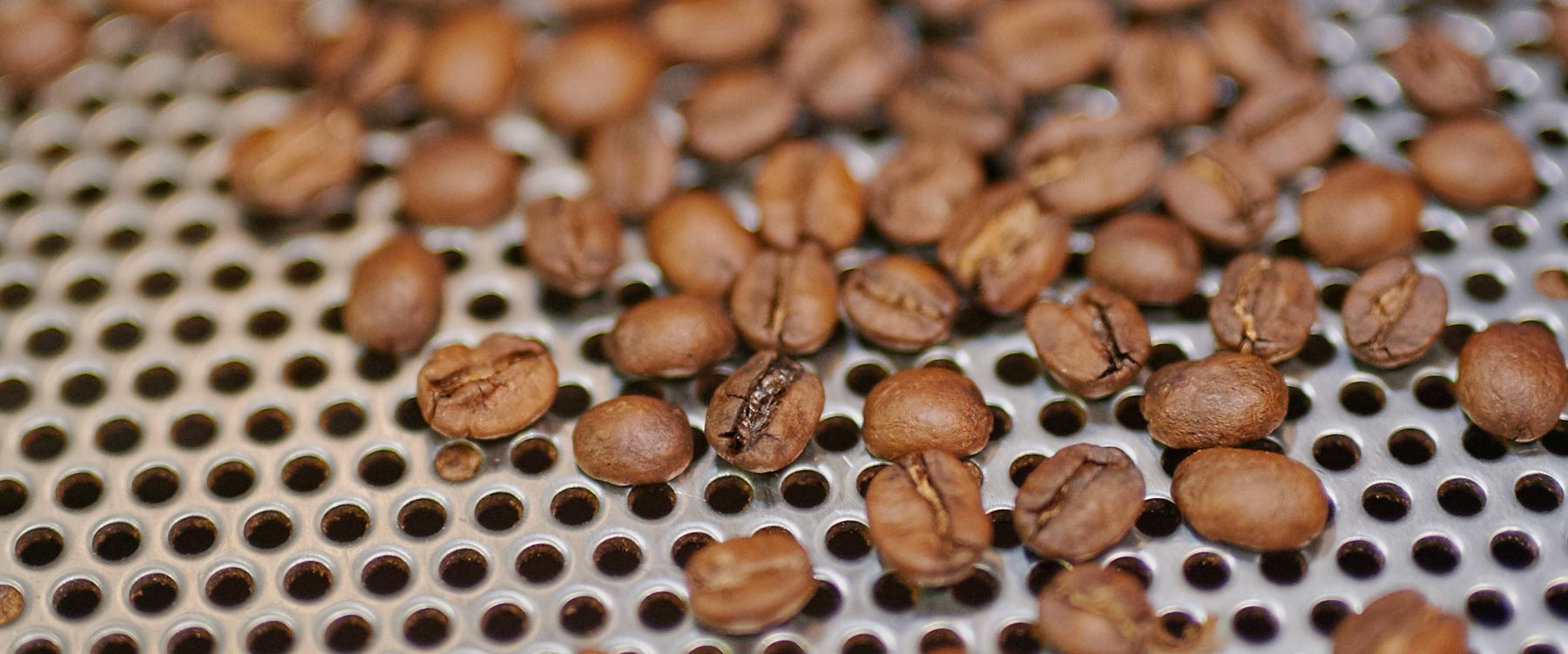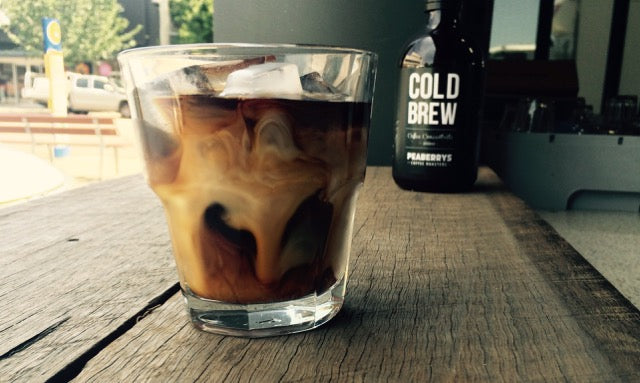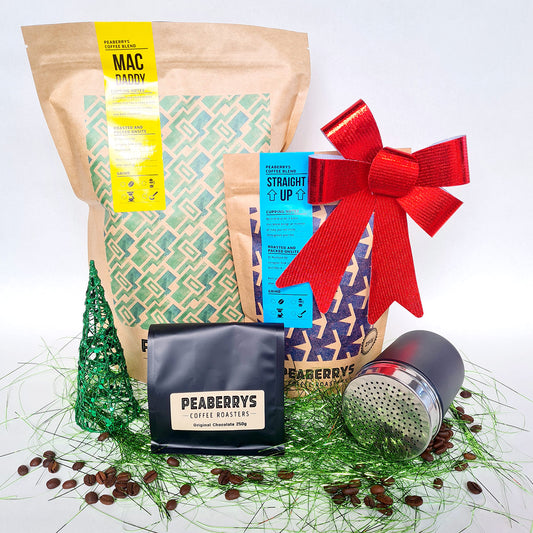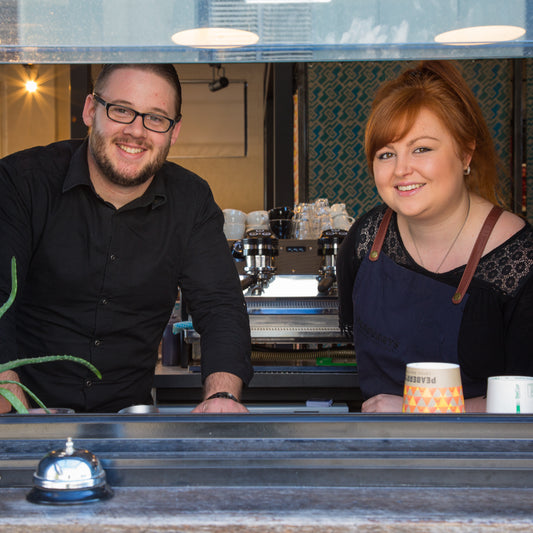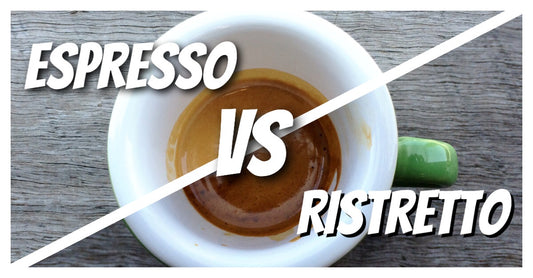Method 1: Espresso

- Grab a 300-350ml glass (or a clear 12oz take-away cup)
- Add ice up to 1/3
- Fill with full-cream milk, leaving a 2cm gap at the top
- Pour a fresh double espresso over the top
Method 2: Cold Brew
 Also known as cold drip or cold press. Either way, it’s simply a method for brewing coffee with cold (or room-temperature) water.
The benefits: lower acidity than hot-brewed coffee. You can brew it bulk and store it in the fridge ready to go.
The downside: it needs to brew overnight & it has a lower yield (i.e. it costs more).
You can use a fancy, japanese-style dripper or a more practical ‘toddy’ brewer. For me, the ‘bucket’ method is the simplest, and best-tasting. You’ll need a saucepan and a paper filter bag like this or some fine muslin / cheesecloth.
To make a 1 Lt batch:
Also known as cold drip or cold press. Either way, it’s simply a method for brewing coffee with cold (or room-temperature) water.
The benefits: lower acidity than hot-brewed coffee. You can brew it bulk and store it in the fridge ready to go.
The downside: it needs to brew overnight & it has a lower yield (i.e. it costs more).
You can use a fancy, japanese-style dripper or a more practical ‘toddy’ brewer. For me, the ‘bucket’ method is the simplest, and best-tasting. You’ll need a saucepan and a paper filter bag like this or some fine muslin / cheesecloth.
To make a 1 Lt batch:
- Weigh out 400g coffee (Blends work ok, or go for a natural-process ethiopian coffee for a deep fruity style)
- Grind it medium-coarse - somewhere between plunger (press) and drip filter - and add it to the filter bag
- Put the bag in the saucepan (at least 2.5 Lt capacity)
- pour 1800ml of cold, filtered water over the grinds and stir
- Tie off the top of the bag, put the lid on the saucepan and leave on the counter to brew for at least 12 hours (up to 24hrs)
- In the morning, lift the bag and squeeze out the remaining coffee
- bottle it up in something with an airtight seal.
Method 3: Iced Filter Coffee
 This is simply filter coffee poured over ice. It can be made with a Pourover, Aeropress or even a batch brewer. When it’s made well, it lets the bright, fruity flavours of a light roasted coffee come through. Work well with washed (wet-process) coffees with plenty of natural acidity (like a Kenya, Panama, Costa Rica, etc)
The trick to avoid watery, lukewarm results is to halve the amount of brewing water you would usually use.
Here’s an example using an Aeropress:
This is simply filter coffee poured over ice. It can be made with a Pourover, Aeropress or even a batch brewer. When it’s made well, it lets the bright, fruity flavours of a light roasted coffee come through. Work well with washed (wet-process) coffees with plenty of natural acidity (like a Kenya, Panama, Costa Rica, etc)
The trick to avoid watery, lukewarm results is to halve the amount of brewing water you would usually use.
Here’s an example using an Aeropress:
- Weigh out 15g (roughly 1 Aeropress scoop worth) and grind it on a medium (paper filter) setting
- Grab a sturdy glass and fill it to the top with ice
- Put the brewer on the glass & pour water from the kettle over the coffee until it comes up to the top of the ‘2’ (100g water to be accurate)
- Give the coffee a quick stir and wait 1 minute
- Put the plunger onto the brewer and press down - not too hard, just let it press down smoothly
That's it for now, feel free to hit us up for more info at: sales@peaberrys.com.au

